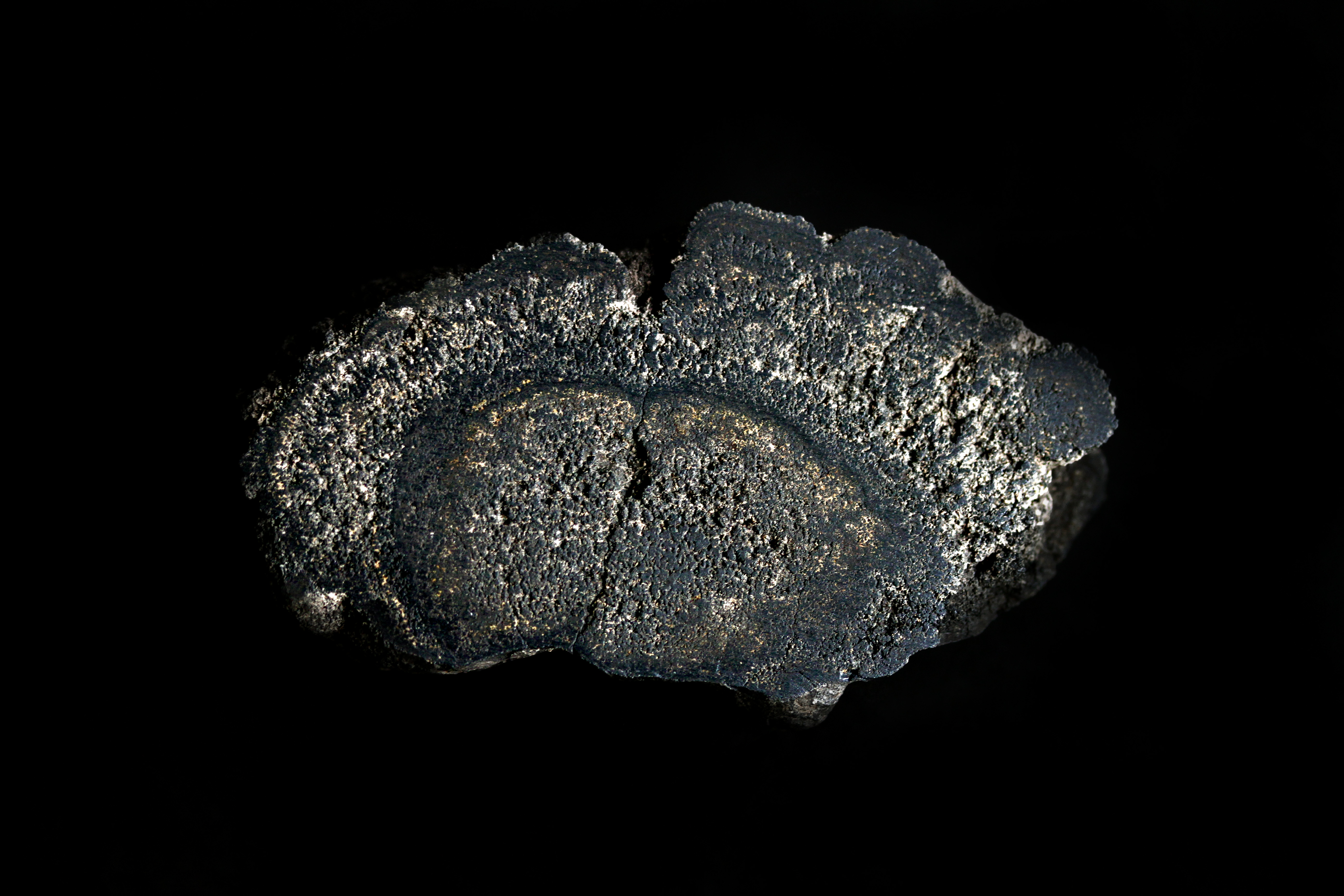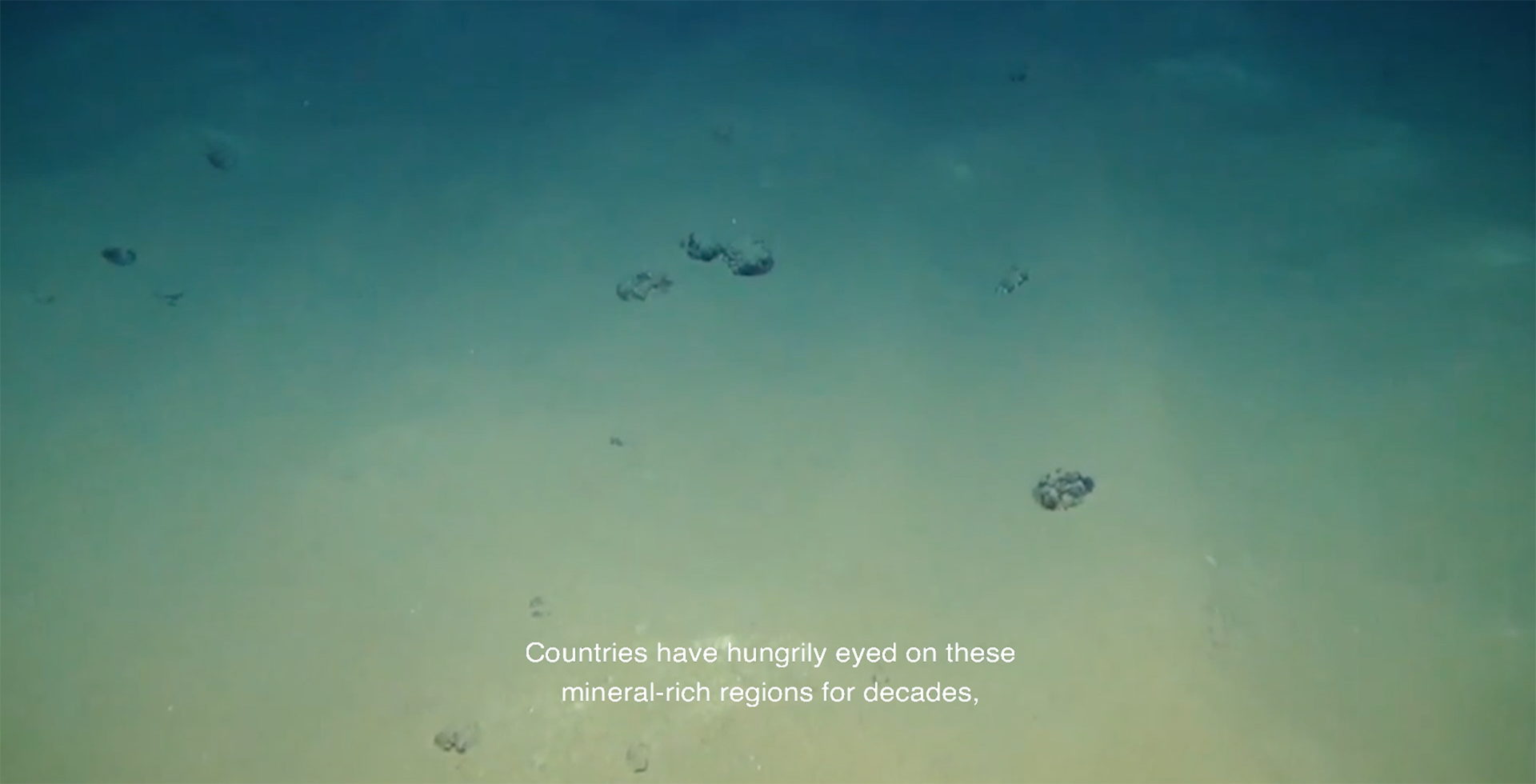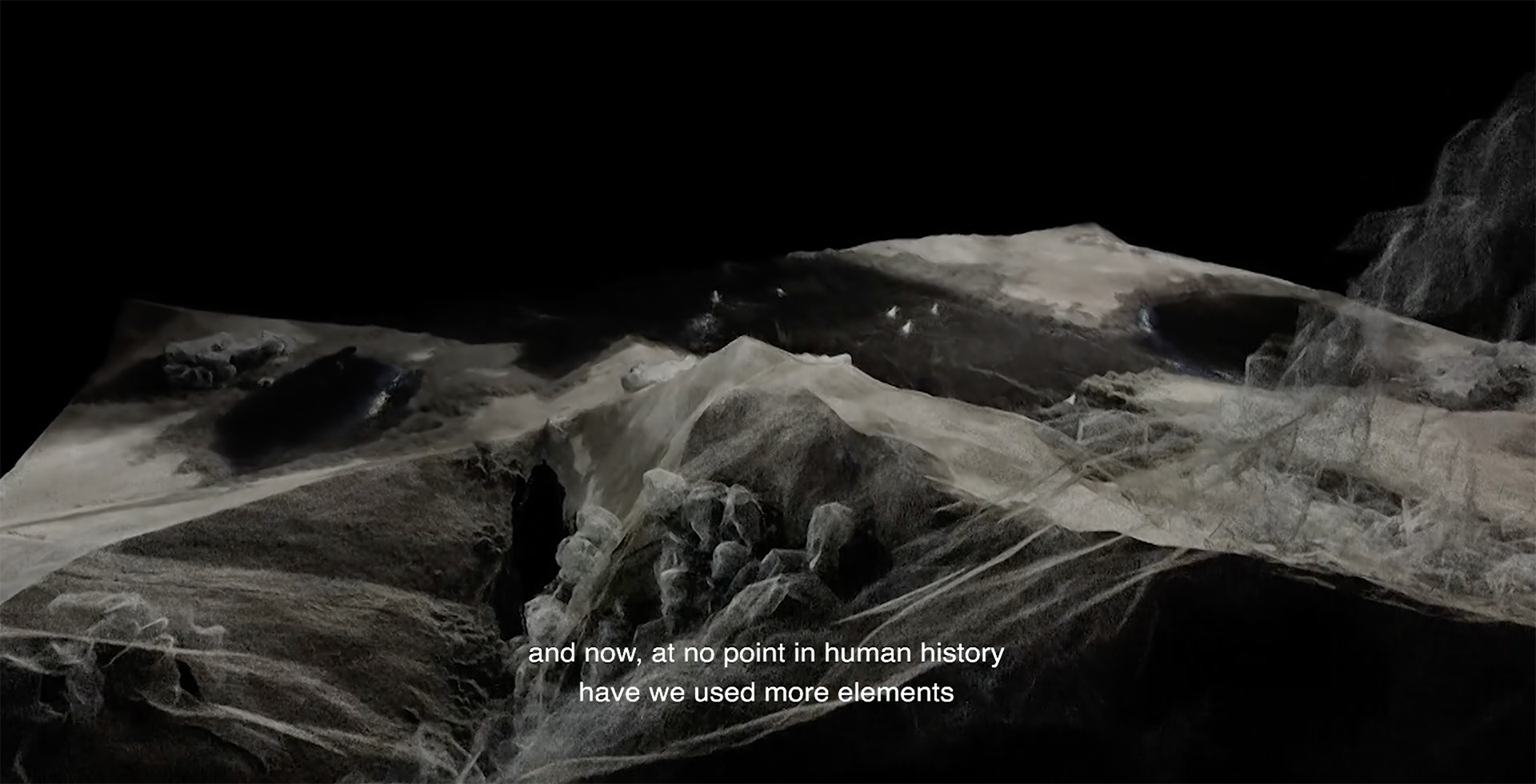
THE RARE METAL AGE / 2019
Installation, including a visual documentary and Publication TRMA.
(3D renderings, footage from ROV deep sea mining vessel and laserscanned landscapes).
The Rare Metal Age is an investigation into deep sea mining, the importance of metals and our future resources. It explores the challenges and complexities that lie ahead and allows us a closer look into the natural elements that shape a significant share of our material world.
The film 'visual essay' follows a new metal resource that has been hidden in the depths of the Oceans. It analyses the repeated patterns of history; a complex interplay of geo-politics, the economy, and the ecosystems. The interest in deep-sea mining is the result of both the growing demands for metals and the continuous depletion of land deposits of minerals. The scope of our dependence on these materials and metals will show that our inventions and technology, as well as our economic and climate security, will come at a cost.
On display is the polymetallic nodule, a metal resource that was collected in 2019 at the research aera at the Clarion-Clipperton fracture zone in the Pacific Ocean where mining and explorations in the deep sea is starting (deep sea mining).
The work was made in collaboration with scientists and marine biologists at NIOZ, the Royal Institute for Sea Research in the Netherlands, where the deep sea mining industry is studied and environmental impact assessed.
The seabed mining world map exhibits the exploration zones, areas of potential economic interest and areas of nodule occurrences around the globe. These nodules contain desirable metals and are found in deep seas that often sit on top of delicate sediments. The demand for such metals has skyrocketed in proportion to their increasing importance in our daily lives, the increasing demand for green energy sources, and the declining availability of them on land. These conditions have renewed the interest of large corporations in deep-sea mining in areas that include territories outside of the jurisdiction of states.
The map illustrates the scale of this pending deep sea mining industry in the marine areas beyond national jurisdiction, commonly called the high seas, those areas of the ocean for which no one nation has sole responsibility for management. In all, they make up 40 percent of the surface of our planet, comprising 64 percent of the surface of the oceans and nearly 95 percent of its volume. These areas are home to significant biodiversity, including unique species and unknown species. Disruption of the seabed by deepsea mining will damage ecosystems, disrupting the natural process of carbon sequestration and thus leading to rising global temperatures. The aim of this project is to shed light on this industry and the importance of the ocean, for the well-being of the planet and humanity now and in the future.
Series of electron micrographs show the topology and zoom into the diverse elemental construction in the polymetallic nodule. Images by Siavash Maraghechi, material scientist at the Eindhoven University of Technology.
The film 'visual essay' follows a new metal resource that has been hidden in the depths of the Oceans. It analyses the repeated patterns of history; a complex interplay of geo-politics, the economy, and the ecosystems. The interest in deep-sea mining is the result of both the growing demands for metals and the continuous depletion of land deposits of minerals. The scope of our dependence on these materials and metals will show that our inventions and technology, as well as our economic and climate security, will come at a cost.
On display is the polymetallic nodule, a metal resource that was collected in 2019 at the research aera at the Clarion-Clipperton fracture zone in the Pacific Ocean where mining and explorations in the deep sea is starting (deep sea mining).
The work was made in collaboration with scientists and marine biologists at NIOZ, the Royal Institute for Sea Research in the Netherlands, where the deep sea mining industry is studied and environmental impact assessed.
The seabed mining world map exhibits the exploration zones, areas of potential economic interest and areas of nodule occurrences around the globe. These nodules contain desirable metals and are found in deep seas that often sit on top of delicate sediments. The demand for such metals has skyrocketed in proportion to their increasing importance in our daily lives, the increasing demand for green energy sources, and the declining availability of them on land. These conditions have renewed the interest of large corporations in deep-sea mining in areas that include territories outside of the jurisdiction of states.
The map illustrates the scale of this pending deep sea mining industry in the marine areas beyond national jurisdiction, commonly called the high seas, those areas of the ocean for which no one nation has sole responsibility for management. In all, they make up 40 percent of the surface of our planet, comprising 64 percent of the surface of the oceans and nearly 95 percent of its volume. These areas are home to significant biodiversity, including unique species and unknown species. Disruption of the seabed by deepsea mining will damage ecosystems, disrupting the natural process of carbon sequestration and thus leading to rising global temperatures. The aim of this project is to shed light on this industry and the importance of the ocean, for the well-being of the planet and humanity now and in the future.
Series of electron micrographs show the topology and zoom into the diverse elemental construction in the polymetallic nodule. Images by Siavash Maraghechi, material scientist at the Eindhoven University of Technology.










Reserach, concept, production;
Anna Diljá Sigurðardóttir
Collaboration, theory contributions;
Royal Institute for Sea Research, NIOZ, Netherlands
Marine geologist Henko de Stigter
Laserscan Laboratory, equipment terrain, Germany
Siavash Maraghechi for electron micrographs
Exhibited;
2023 Parallel dimensions, Felleshus, Berlin, Germany
2023 Design Film Festival, Design March, The Nordic House
2023 Climate Day at Harpa Conference Hall, Iceland
2022 Mutation, Fiber Festical, Dokzaal, Netherlands
2021 Beyond the cloud at 1111 gallery, Budapest, Hungary
2021 Design March, Follow us at Gerðarsafn, Iceland
2019 Dutch Design Week, Grad-show, Netherlands
Talks;
2024 ‘Oceans in transformation’ lecture at the Green Days, GAIA, University of Iceland
2023 ‘Beyond deep-sea mining: Alternative narratives for deep-sea governance in the Arctic’ panel at Arctic Circle Assembly, Harpa, Iceland
2023 ‘Oceans in transformation’ lecture at DesignThing/Hönnunarþing, Húsavík, Iceland
2023 ‘Oceans in transformation’ lecture at MA Environment and Natural Resources, University of Iceland, Reykjavík
2022 ‘Oceans in transformation’ at the Sneiðmynd at Icelandic University of the Arts, Reykjavik
2022 ‘Oceans in transformation’ at Socail Service Club, art organisation, Copenhagen, Denmark
2021 ‘Oceans in transformation’ at the Design Masters at Icelandic University of the Arts, Reykjavik
2021 ‘The floors of the Oceans’ at the BA of Design at Icelandic Univeristy of the Arts, Reykjavik
2019 ‘Deep-sea mining in the Rare metal age’ at the Arena with Scientist Henko de Stigter NIOZ, DDW, Netherlands
2021 ‘Carbon Geomancy’on the politics of extraction at the Interdisciplinary seminar at Icelandic University of the Arts
2019 Bachelor of Food Non Food (Cum laude)
Design Academy Eindhoven
Special thanks to;
Filip Setmanuk
Henko de Stigter